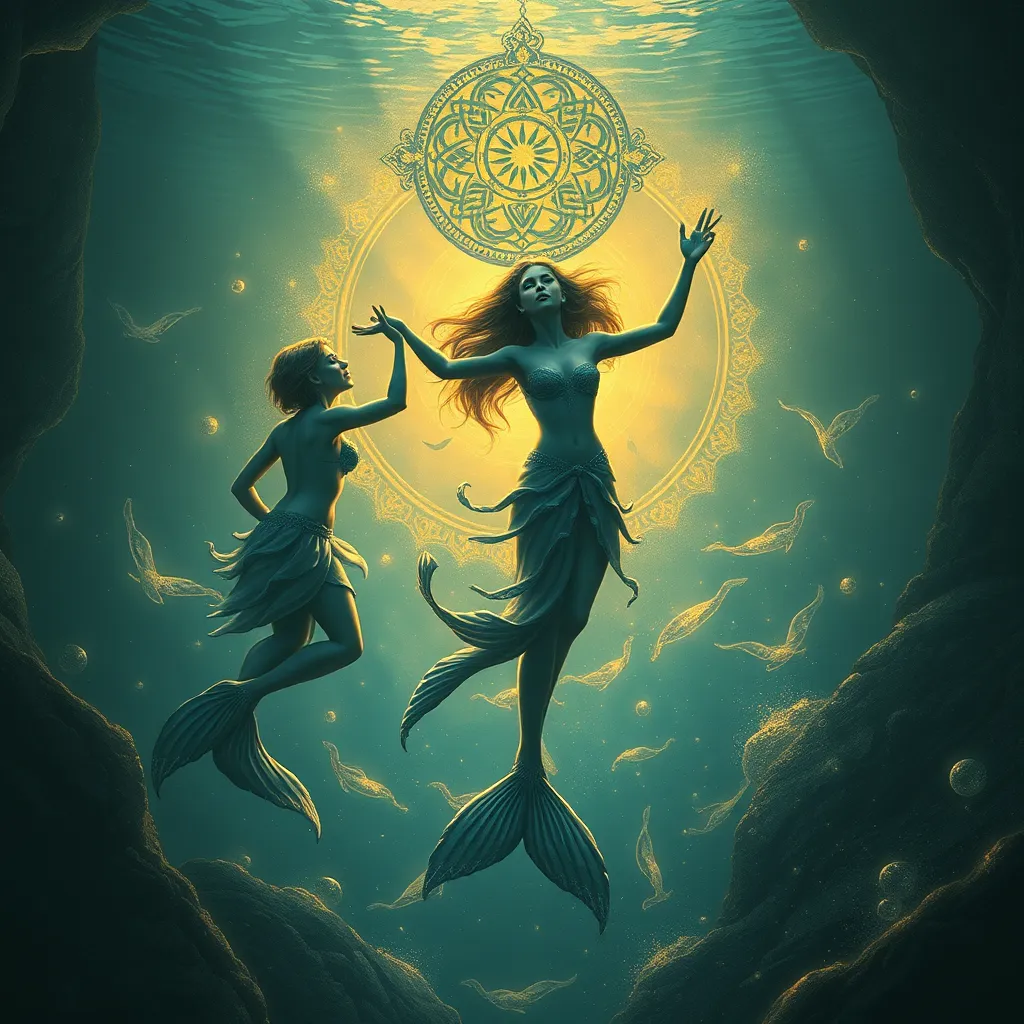The Mermaid’s Dance: Understanding the Symbolism and Rituals of Mermaid Lore
I. Introduction to Mermaid Lore
Mermaids have captivated human imagination for centuries, appearing in folklore across diverse cultures. These mythical creatures are often depicted as beautiful beings with the torso of a human and the tail of a fish, embodying both allure and mystery. The rich tapestry of mermaid lore reveals much about societal values, fears, and the human experience.
Across various civilizations, mermaids symbolize the duality of nature, embodying both beauty and danger. They are often associated with the ocean’s depths, representing the unknown aspects of life and the subconscious mind. This article aims to explore the historical origins, symbolism, rituals, artistic representations, and modern interpretations of mermaid lore, shedding light on why these enchanting figures have endured through time.
II. Historical Origins of Mermaid Myths
The origins of mermaid myths can be traced back to ancient civilizations, where tales of half-human, half-fish beings were prevalent. In Assyrian mythology, the goddess Atargatis transformed into a mermaid, reflecting the intertwining of divine and aquatic realms. Similarly, the ancient Greeks told stories of sirens, who lured sailors to their doom with their enchanting songs.
As time progressed, mermaid imagery evolved. From the seductive sirens of classical antiquity to the more romanticized versions seen in the Renaissance, the portrayal of mermaids has shifted significantly. Key texts, such as Hans Christian Andersen’s “The Little Mermaid,” have further shaped contemporary perceptions, emphasizing themes of love, sacrifice, and transformation.
Artifacts, including ancient sculptures and pottery, depict mermaids, showcasing their prominence in different cultures. These historical references not only highlight the fascination with these creatures but also reflect the values and beliefs of the societies that created them.
III. Symbolism of Mermaids
Mermaids embody a complex duality in their symbolism. On one hand, they represent beauty, grace, and allure; on the other, they symbolize danger and the unpredictable nature of the sea. This duality mirrors the complexities of human emotions and relationships.
- Beauty and Danger: Mermaids are often seen as enchanting figures who can lead to peril. Their captivating songs draw sailors in, only for them to face dire consequences.
- Femininity and Sexuality: Mermaids are frequently interpreted as representations of femininity, embodying both the nurturing and destructive aspects of womanhood. They evoke themes of desire and the complexities of female identity.
- Water and Emotions: Water is a powerful symbol in psychology, often associated with emotions and the subconscious. Mermaids, as creatures of the sea, embody this connection, representing the depths of feelings and the mysteries of the inner self.
IV. Rituals Associated with Mermaid Lore
Throughout history, various cultures have engaged in rituals honoring mermaids, often as a means of seeking their favor or protection. These rituals vary widely, reflecting local beliefs and practices.
- Traditional Rituals: In some coastal communities, offerings of flowers or shells are made to the sea in hopes of attracting mermaid blessings. Rituals may also involve storytelling, where community members share tales of mermaids to preserve cultural heritage.
- Modern Interpretations: In contemporary spirituality, individuals might create personal rituals that incorporate elements of mermaid lore, such as meditation by the sea or creating altars dedicated to these mythical beings.
- Music and Dance: Music and dance play a significant role in mermaid rituals. Traditional songs may honor the sea and its creatures, while modern interpretations often include expressive dance forms that celebrate the fluidity and grace associated with mermaids.
V. The Mermaid in Art and Literature
Mermaids have been depicted in art and literature for centuries. Their representations in classical art often emphasize their beauty and allure, while contemporary art may explore deeper themes of identity and transformation.
- Classical Art: Artists such as John William Waterhouse have immortalized mermaids in paintings that capture their enchanting beauty and the allure of the sea.
- Literary Analysis: Mermaids appear in literature as symbols of longing and desire. In Andersen’s “The Little Mermaid,” the character’s struggle between her love for a human and her identity as a mermaid reflects profound themes of sacrifice and existential yearning.
- Impact on Popular Culture: The fascination with mermaids has permeated modern media, influencing films, music, and fashion. From Disney’s adaptations to contemporary fantasy novels, mermaids continue to inspire creativity and imagination.
VI. Mermaids in Modern Spirituality and Practices
In recent years, there has been a resurgence of interest in mermaid symbolism within contemporary spirituality. Many individuals draw inspiration from mermaid lore to explore their spiritual practices and beliefs.
- Resurgence of Symbolism: Mermaids are often seen as symbols of empowerment, encouraging individuals to embrace their feminine energy and connect with their emotional depths.
- Ocean Rituals: Practices inspired by mermaid lore may include ocean rituals, where individuals immerse themselves in water as a means of cleansing and rejuvenation.
- Feminist and Eco-Spiritual Movements: Mermaids are increasingly linked to feminist and eco-spiritual movements, symbolizing the connection between femininity and nature. They serve as reminders of the importance of protecting our oceans and respecting the earth.
VII. The Psychological and Emotional Resonance of Mermaids
Mermaids also serve as powerful psychological archetypes, representing various aspects of the human psyche. Their allure and complexity resonate deeply with individuals, often addressing personal and societal issues.
- Archetypes in Psychology: Mermaids can be seen as representations of the anima, the feminine aspect of the male psyche, or as symbols of the unconscious mind, embodying repressed desires and emotions.
- Personal Connections: Many individuals find solace in mermaid symbolism, using it as a lens through which to explore their identities, relationships, and emotional struggles.
- Case Studies: Stories of individuals who identify with mermaids reveal how these figures provide a framework for understanding personal challenges, from exploring femininity to navigating the complexities of love and loss.
VIII. Conclusion: The Enduring Legacy of Mermaid Lore
Throughout history, mermaids have remained significant figures in mythology and culture, embodying complex themes of beauty, danger, and emotional depth. Their enduring legacy reflects humanity’s fascination with the mysteries of the sea and the complexities of the human experience.
The continuing allure of mermaids in modern society invites individuals to explore their connections to these mythical beings. Whether through artistic expression, personal rituals, or psychological exploration, mermaid lore offers a rich tapestry of meaning that resonates across time and cultures.
As we delve into the depths of mermaid mythology, we are reminded of the beauty and danger that exist in both the ocean and our own emotional landscapes. The dance of the mermaid continues to inspire us to embrace our own stories, inviting us into a world of wonder and reflection.




